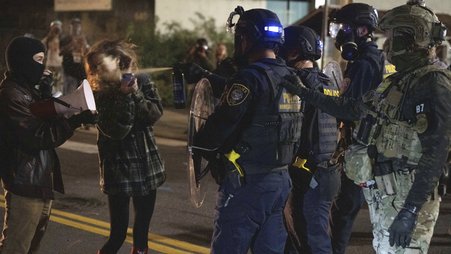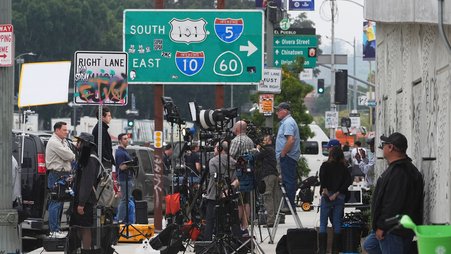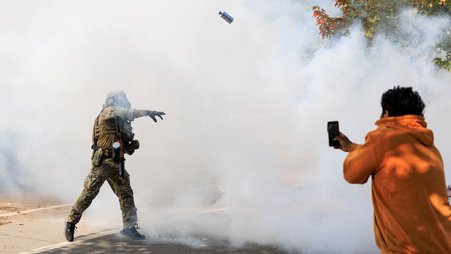
Law enforcement officers have photographed the faces or IDs of nearly three dozen journalists in Oregon and Minnesota in recent months, according to new data published by the U.S. Press Freedom Tracker. The Tracker categorizes this practice in its “chilling” category, and notes that “law enforcement agencies in both cities did not disclose why they documented the identities of the journalists or what was done with the images they captured.”
The “chilling” description is apt, as these measures don’t appear to serve any law enforcement purpose beyond intimidating reporters who are doing their job. And if there is some reason to be recording this data, the departments in question must absolutely explain why that’s the case.
Other important questions are left unanswered: Is this data being recorded and retained in law enforcement databases? Are the images subjected to face recognition software, or included in their corpuses for future scans? And do these actions reflect some broader policy directive, or merely officer initiative?
The U.S. Press Freedom Tracker’s story on the topic goes into specific incidents in detail, pulling from its reporting on those cases. One incident it describes is that of Sloane Martin, who reports for Minneapolis CBS affiliate WCCO. Officers photographed her ID during a protest in Brooklyn Center in April:
Martin wrote that she was in a gas station trying to return to her car, and she shouted “Press!” to a line of officers from a distance to identify herself. An officer whom she believes was a Minnesota State Patrol trooper shouted at her to get on her knees, but another officer directed her to come over and show her ID, she wrote. Martin didn’t respond to requests for comment.
Photojournalist Maranie Rae Staab, a freelancer who has worked with The Washington Post and The New York Times, was one of several reporters who described officers from the Portland Police Bureau labeling them with duct tape, and posted footage of her forced removal from the police kettle.
“I’m a member of the press,” Staab is heard explaining as three PPB officers tell her they’ve asked the press to leave. “It’s my job. I am a member of the press. I want to report, I do not want to leave.”
Officers then proceed to escort her out despite her protestations, and an officer can be heard saying, “You have to leave.”
The U.S. Press Freedom Tracker’s nationwide ambit allows its reporters to identify emerging practices among law enforcement and other potential hurdles to press freedom as journalists first begin to encounter them. It has previously written about reporters caught in police “kettles” set up in response to protests in many cities, and reported on how COVID-19 restrictions affect newsgathering at the state level.




